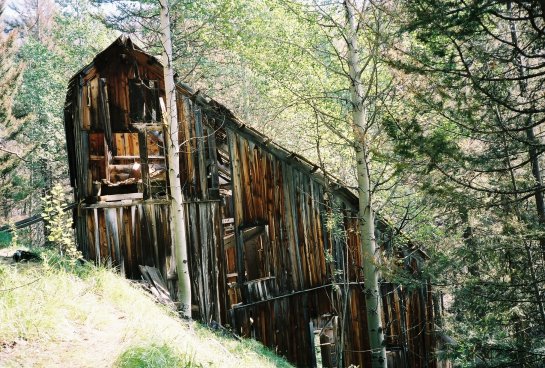-
Posts
435 -
Joined
-
Last visited
Content Type
Profiles
Forums
Articles
Gallery
Downloads
Events
Posts posted by habu68
-
-
Example of a really big fly press from the 18th century. CLICK HERE
Great book by the way.
Diderot Pictorial Encyclopedia of Trades and Industry: Manufacturing and the Technical Arts -
Genius is present in every age, but the men carrying it within them remain benumbed unless extraordinary events occur to heat up and melt the mass so that it flows forth.
Denis Diderot
French author, encyclopedist, & philosopher (1713 - 1784) -
Slob,
Just about the time you think you know something about some thing, you see someone that does that kind of work and you realize you don't know noth'n.;) -
“Anyone who can only think of only one way to spell a word obviously lacks imagination.” -Mark Twain
-
this is a link that I found today on a reproduction of a civil war forge wagon. The discussion includes some nice shots of box hardware and a unique bellows design.
TRAVELING FORGE DISCUSSION - Home -
Judge: "Miss West," are you trying to show contempt for this court?"
May West: "On the contrary, your Honor, I was doin' my best to conceal it." -
I like kids......parboiled.....
W. C. Fields -
A friend that worked in my brother's shop for a while is one of the top micro welders in the country, he specializes in repairing plastic injection molds by welding and machining what are sometimes multi-million dollar molds. He regularly tig welds under a 200 power microscope. I have watched him weld pop cans together and lay a bead along the edge of a razor blade. I have watched him heat treat(aneal) a 3000 lb mold made of h13 to prepare it for welding ,do a small weld, machine and re-heat treat. The weld took less than 15min to do, machining another 2 hrs with set up. But to heat treat the mold took a week bring it up to temp and cooling so the tool did not warp. For a guy like me who can barely stick two pieces of 1/4 inch stock together with the buz box it was a humbling experience.
-
Another is Whitaker's "The Blacksmiths Cook Book" a joy to read, it is now out of print but I picked up a copy through an inter-library loan and copied it for my personal use. The copies I have found at book sellers are at best pricey.
# ISBN-10: 0939415003
# ISBN-13: 978-0939415007
The master smith at the historical park that I worked at spent a year apprenticeship with Mr Whitaker. He had many stories of the Master's wit. When he was asked by a student " Is this bar strait enough?" Francis replied without looking at the piece, "Is it strait?". -
On the gas forge, is the entry point of the flame directly toward the part? If so you may have the same problem as the coal forge because the oxygen as not been used up before striking the part. Try placing the part out of the direct path of the flame or direct the flame to the side of the forge. Also, reducing the door opening will give more back pressure to the forge giving the gases more time to burn in the chamber. ymmv (your mileage may vary )
-
This is the stash of spikes the Denver Rio Grand Keeps on hand for me about 1/2 mile from the house.
-
-
Just bloody wonderful :-) I was surfing this morning and came across this site. It's a on-line copy of the Joseph Stokes blacksmithing books. This is part of what I think of as the tri-group of blacksmithing books. These are the how-to books I recommend.(just my opinion) Three different groups of books by British authors on blacksmithing. All of the authors are/were apprenticed smiths and when I write apprenticed, I mean under the old systems. I can not over emphasize what this means, a passing on of skills from as far back as you can go in time. Everyone of these books are filled with no nonsense, practical how-to blacksmithing.
The first group is the Cosira books. The intent of the authors of these books were to provide the rural smith with guidance in making the transition from purely agricultural smithing to the area of decorative smithing.
Craft publications
The second group are Mr. Stokes books. Their purpose was to help the third world smith make his craft economically viable in a land with limited modern resources*.
Workshop Report on the integration of population education into programmes for rural youth in Zimbabwe
Agricultural engineering in development
I'm not finding volume three, but copies of all these books can be bought from Norm Larson in CA.
The last are the Mark Aspery's book with two more volumes to follow.
Between the Mr. Stokes and Mr. Aspery's books, there isn't much left to say about hand forging of tools.
*Responding to a ad, Joseph Stokes was hired by the United Nations to teach machine shop in Africa. When he got to the location, he realized that what was needed wasn't machine skills, but something far different. What they needed was to learn metalworking skills that would help them become self-sufficient. With that began the UN's agricultural blacksmithing program. Mr. Stokes went on to write the three volume set of books for the UN's program. His idea was to teach rural smiths how to make tools out of scrap metals* and then to use those tools to make farming tools. The next progression was repair of farm equipment. Off and on over twenty years, Mr. Stokes returned to Africa and taught classes. He did his five year apprenticeship right after WWII in Oswestry, Shropshire, England, UK in a shop without electricity.
*He joked with me, that after he taught a class, no truck or car left on the side of the road, was safe. -
Flypress and tooling - Blacksmith Picture Gallery
in this photo every 4th thread is a single lead so you can see how far a single turn of a flywheel will move the tool.. Note the tooling. -
There are more than one tread that wind around the shaft this increases the pitch and makes the vertical travel faster than the rotational travel. This is called a 2 , 3, or 4 lead screw. A 4 lead fly press is best for blacksmithing as it gives the fastest travel.
these threads are also called multiple start threads. CNC Tech Talk - Dealing With Multiple Start Threads On Turning Centers - 02/06
2 start threads are commonly found on the screws for garage door openers and on some wood working vises. 3 and 4 starts a much less common and are a good "test" for a machinist. Remember you must be able to turn a nut to match. -
Blacksmith Anvil Hardy Chop/Guillotine Fuller (Necker). I'll make my next one if I can ever wear this one out.
-
double post please delete
-
Posted by IceCzar on another string,
Iron and Steel - LoveToKnow 1911 -
A flypress for blacksmithing requires a 3 or better a 4 pitch thread to get the power and speed needed to make quick blows with the tool. Finding a 1 1/2", 4 pitch nut and screw is where the problem is. The frame for the Flypress needs to be massive because the momentary forces are almost infinite. Great tool for production bending, forming,punching and slitting.
-
A set of Jaws with a V cut across the length and width of the jaws are good for holding round stock and square stock on the diamond. You can make these either as a set of jaw accessories or part of your basic jaws. You will find them to be as handy as a shirt pocket.
-
Chalk board chalk rubbed into a file before use will ease cleaning with a file card.
-
-
The SR-71 black bird spy plane (Habu) was the test bed for early TI development, here are some quotes on some of the production problems they had:
"This was an entirely new structural technology. The process of learning how to work with titanium was long and difficult. It is a very hard material; tools that work well on aluminum break when used on titanium. New machining techniques and tools had to be developed. Titanium reacts badly with chlorine, fluorine and cadmium. This proclivity caused significant problems on two fronts. Initially, the water used to wash parts for spot welding came from the Burbank municipal water supply. In the summer, this water was heavily chlorinated to prevent algae growth. Lockheed had to use distilled water for all its titanium processing.
Cadmium was also a problem; many ordinary tools (particularly wrenches) were cadmium-plated to prevent them from rusting. Tiny flakes of cadmium from tools attacked titanium bolts and caused their heads to drop off when the structure was heated."
SR-71 Blackbird | Flight Journal | Find Articles at BNET.com -
Here in Colorado we build our smithies on the side (not into ) of mountains. This gives a natural slope to the floor, thus any object left on a workspace will slide off the table onto the floor and slide to the low wall. This way you eliminate the need for material racks altogether and the shop floor is always clean. The only downsides are that the smith must develop one leg longer than the other in order to properly address his anvil and tools must be securely fastened with string to the smiths belt.
picture of shop


Fly press lateral thinking
in Presses
Posted
Dang your eyes,,,,there went my afternoon......:o